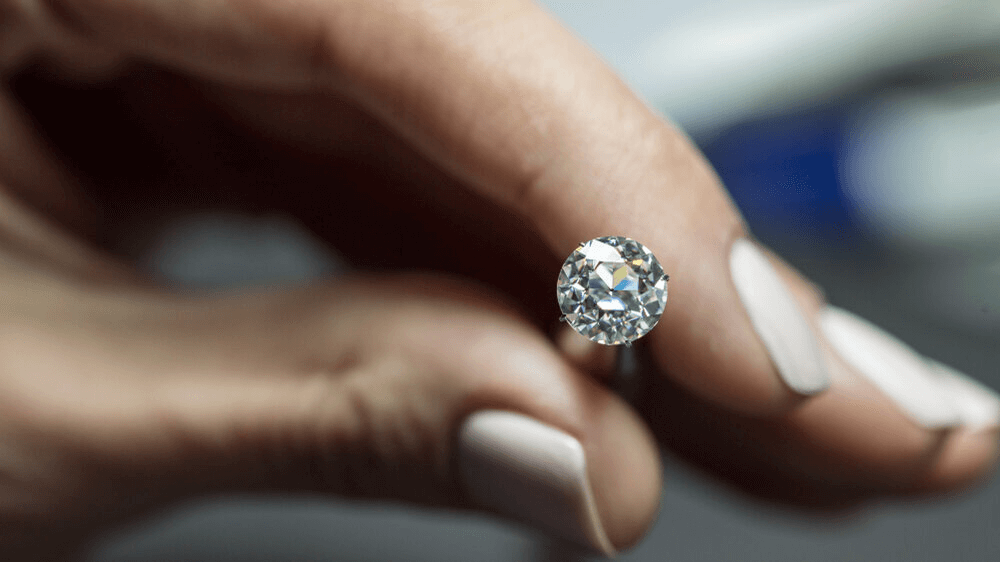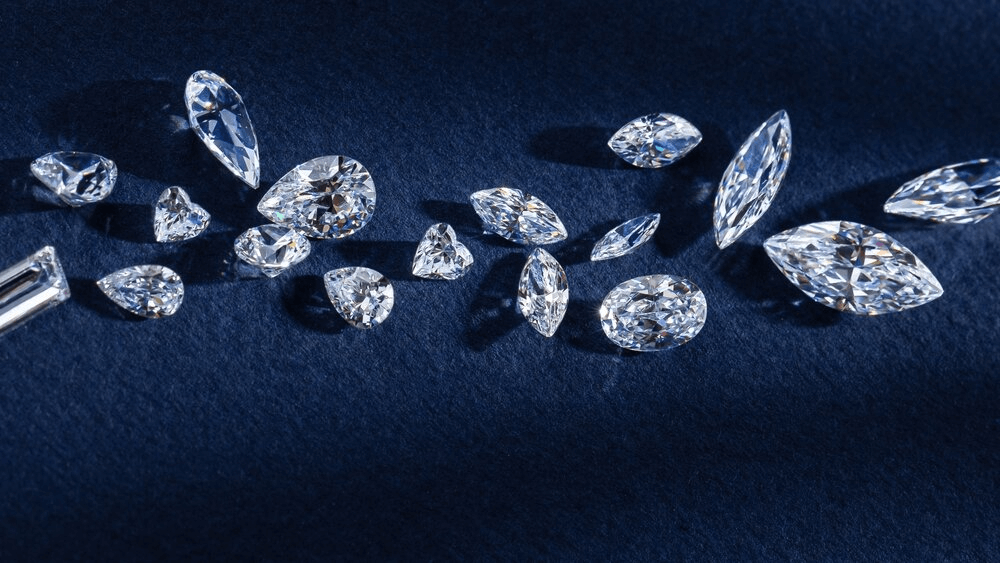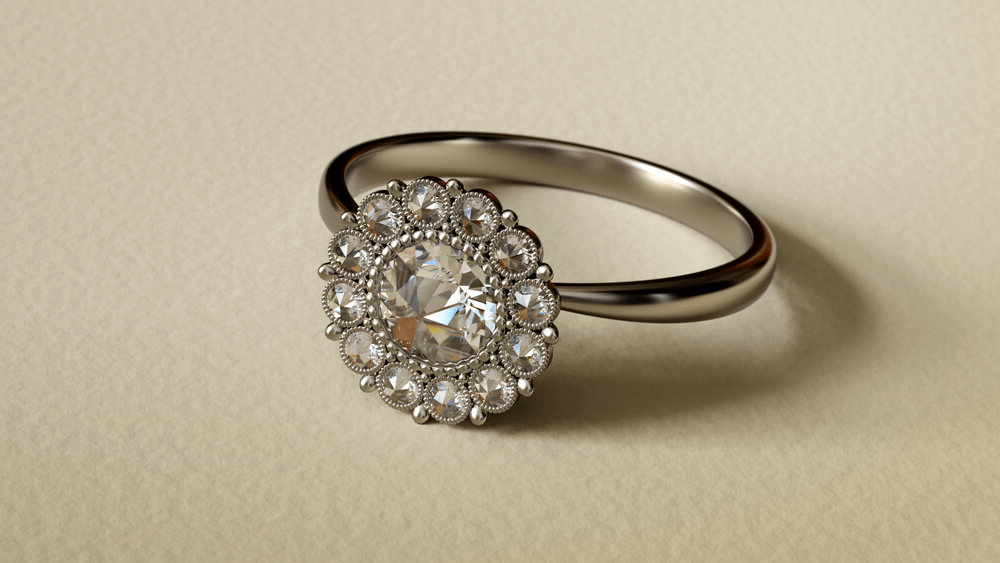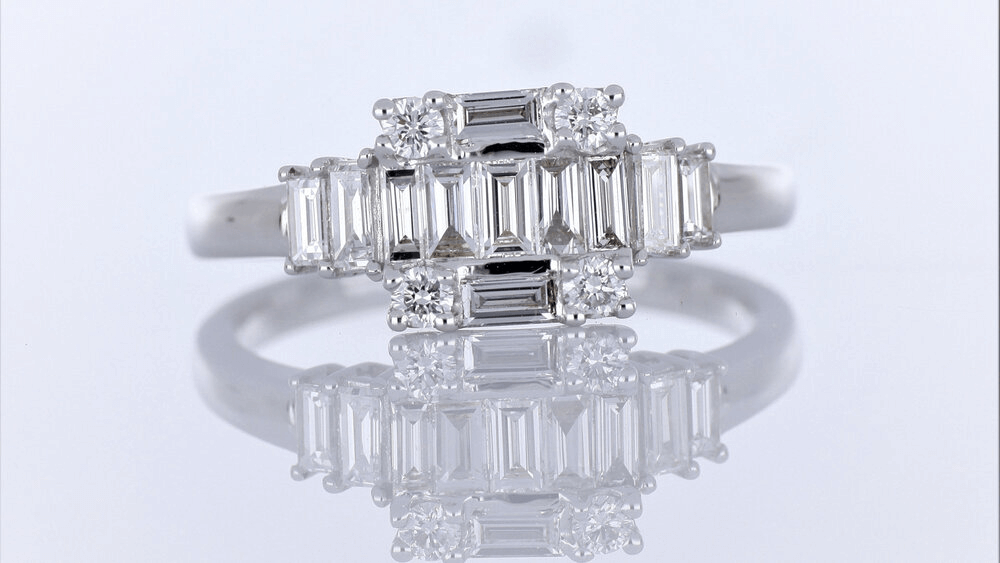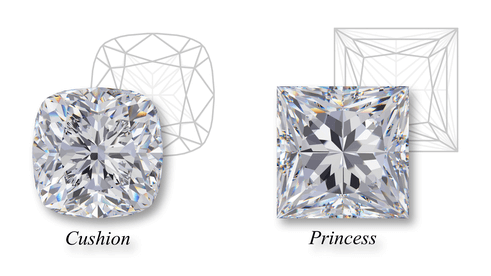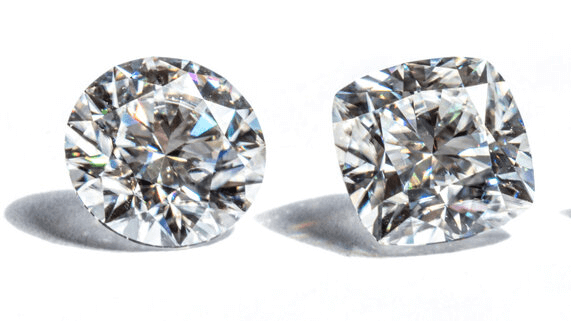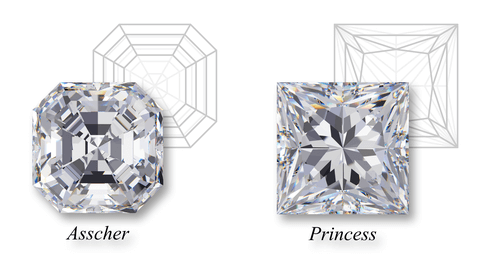The World’s Most Expensive Diamond Cuts Revealed!

By Gary A.

Edited by Olivia H.
Published Oct 3, 2021
Edited on Dec 18, 2024
When it comes to selecting a truly breathtaking engagement ring, choosing between the most expensive diamond cuts could be the key to making a statement—are you ready to explore your options?

- 8 Quick Tips for Buying a Diamond Engagement Ring: Focus on the Most Expensive Diamond Cut
- Introduction
- The Difference Between Shape and Cut
- The Influence of Popularity and Demand
- The Pinnacle of Luxury: Round Brilliant Cut
- The Art of Diamond Cutting
- A Symphony of Light: Facets and Brilliance
- Cost comparison: The Most Expensive Diamond Shapes
- Hearts and Arrows: The Premium Choice
- 7 FAQs
Before we dive deeper into the specifics, here are some practical tips to help guide your decision-making process:
8 Quick Tips for Buying a Diamond Engagement Ring: Focus on the Most Expensive Diamond Cut
- Tip 1: Understanding the 4Cs with Emphasis on Cut: Prioritize the cut quality when selecting the most expensive diamond cut, typically the Round Brilliant. A well-cut diamond will exhibit superior brilliance and fire. Balancing the 4Cs: While focusing on the cut, don’t overlook the other 3Cs – Color, Clarity, and Carat. These factors collectively determine the diamond’s overall quality and value.
- Tip 2: Evaluating Cut Proportions and Symmetry: Check the diamond’s proportions, as they impact how light is reflected and dispersed. Ideal proportions maximize brilliance, especially in expensive cuts. Symmetry: Ensure the diamond’s facets align perfectly. In high-quality cuts like the Round Brilliant, symmetry is crucial for achieving optimal sparkle and light performance.
- Tip 3: Assessing Diamond Shape vs. Cut: Recognize the difference between diamond shape and cut. The most expensive cut, such as the Round Brilliant, is not just about shape but also about the precision of facets and angles. Personal Preference: While the most expensive cut offers brilliance, consider other shapes that may appeal to personal taste and potentially offer more uniqueness.
- Tip 4: Analyzing Light Performance and Brilliance: Pay attention to how light plays within the diamond. The most expensive cuts, like the Round Brilliant, should exhibit exceptional light refraction and a balanced pattern of bright and dark areas. Brilliance Assessment: Observe the diamond under different lighting conditions. A high-quality cut should maintain its brilliance and sparkle across various lighting environments.
- Tip 5: Budgeting Wisely Without Compromising on Quality: When investing in an expensive diamond cut, balance your budget with the desired quality. Sometimes, a slight compromise on carat size or clarity can secure a better cut within budget. Long-Term Value: Consider the most expensive diamond cut as a long-term investment. High-quality cuts like the Round Brilliant tend to retain their value over time.
- Tip 6: Comparing Similar Diamonds: Compare diamonds of similar grades side by side. This practice is particularly important for expensive cuts to discern subtle differences in sparkle and overall appearance.
- Tip 7: Online Tools: Utilize online platforms that offer high-resolution imaging and 360-degree views for comparing diamonds. This is especially useful for understanding the nuances of expensive cuts.
- Tip 8: Considering Diamond Certification: Ensure the diamond comes with a reputable certification, like GIA or AGS. Certifications for expensive cuts should detail the cut quality, proportions, and symmetry accurately. Verification: Verify the diamond’s certification against its physical characteristics. This step is crucial for expensive cuts to ensure the diamond matches its documented quality.
Now that you’ve got these practical tips, use Jeweler AI below to find the perfect engagement ring that suits your style and budget:
Introduction
Whether your diamond is a classic Round or Oval cut, a fancy Pear or Marquise, or a vintage Emerald or Asscher, it stands to reason that the price is going to be determined primarily by its size (or, more accurately, its carat weight) and its quality.
After all, while our tastes in diamond cuts will always differ, it’s pretty clear that bigger, clearer, and better-proportioned diamonds will always be worth more – or, at least, much more than those that are smaller, discolored or poorly cut.
It can take some time to get your head around each of the Four Csalluded to above, but, in reality, they’re not the only thing that impacts the value of a diamond. Alongside the quality of a diamond’s cut(which, as you know, should always be in the Excellent – Very Good range) the shape of the diamond itself will alter its value on the market for a few good reasons.
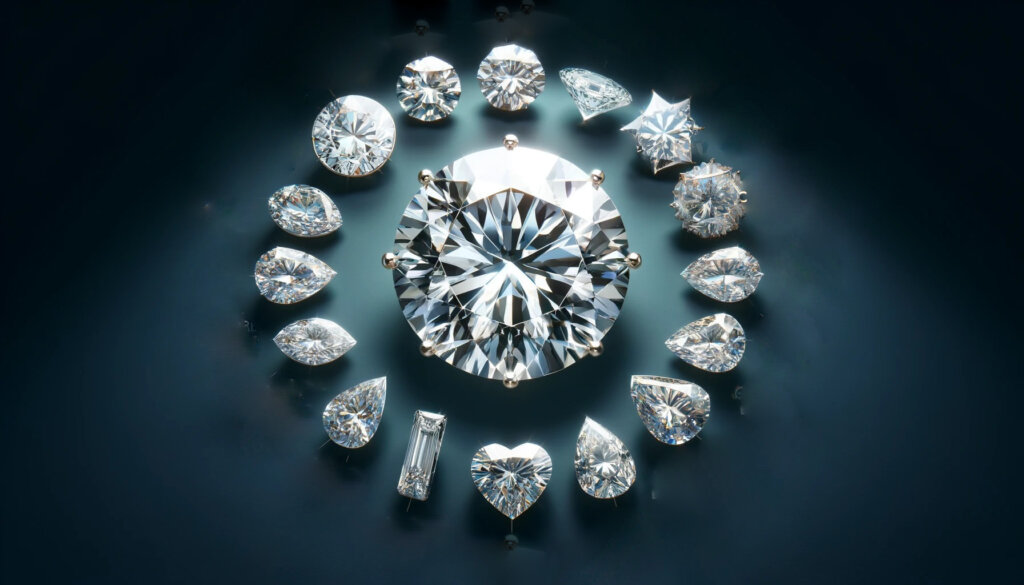
The Difference Between Shape and Cut
It’s very normal for these two phrases to be used interchangeably when you’re shopping for diamonds. In reality, cut refers to the diamond’s proportions, polish and symmetry, while shape refers exclusively to the form the diamond has been cut into – for instance, a Radiant, Round, Emerald, or Pear.
As one of the Four Cs, the subject of ‘Cut’ is very important to get right – and you can read more about diamond proportion in this guide. Here, however, we’ll focus on the many different shapes diamonds are cut into – and how this will impact your final total at the jewelry store.
The Influence of Popularity and Demand
It should come as no surprise that popularity is reason enough on its own to give any diamond shape’s value a boost. But, as a first-time shopper, knowing which shapes are the most popular doesn’t always come naturally – although the answer is a little more obvious than you might be expecting…
The Pinnacle of Luxury: Round Brilliant Cut
The Round brilliant has represented the mainstay of the engagement ring world for many, many decades. While the popularity of certain cuts, like the Pear, comes and goes throughout the generations, the Round diamond has never been unseated as the most popular and traditional shape out there.
There are many reasons why the Round Brilliant is so consistently our favorite. For starters, it’s versatile and classic without looking old-fashioned. It’s also the sparkliest shape on the market.
The Art of Diamond Cutting
The Heart is widely considered to be the trickiest shape to get perfect, with the Pear also causing some headaches for diamond cutters. The Round, however, requires the most precision – and leads to the most wastage.
The challenges of crafting Heart and Pear cuts.
When it comes to the Heart and Pear shapes, this can mean that it is tougher to find a good quality cut – although it’s certainly not impossible. You can browse a wide selection of ‘Excellent’ and ‘Very Good’ GIA graded Pear cuts here, for instance.
Nevertheless, the cutting process behind the Round is yet another reason why it remains significantly more expensive than these two tricky-to-master shapes. Perfecting each and every facet and attaining that mathematical level of precision that went into creating the Round brilliant shape in the first place is not easy, particularly when the diamond cutter needs to focus on preserving as much weight as possible.
We mentioned above how this wasted rough diamond can be used to create melee diamonds (among other things), but a larger diamond is still going to be worth far more than the diamond cutter. Since other shapes produce less waste, the Round has yet another reason to be the costliest shape out there.
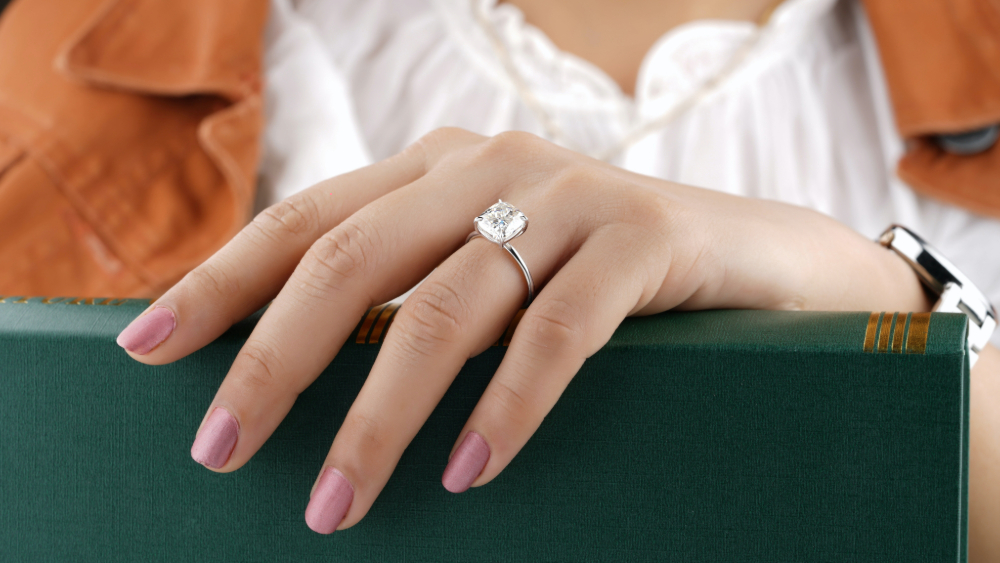
A Symphony of Light: Facets and Brilliance
The Round is known for featuring 57-58 facets, although the Oval, Cushion and Emerald all feature the same number of facets.
Most diamonds will feature 57 facets, and the 58th facet is represented by the culet – an undesirable extra cut made into the tip of the diamond’s pavilion.
This high number (and the very particular arrangement) of facets is why the Round is known for its incredible sparkle – and why it’s regarded as one of the most difficult cuts to get perfect.
Cost comparison: The Most Expensive Diamond Shapes
If it wasn’t already crystal clear by now, the Round cut diamond represents the most expensive choice for shoppers today – and for the foreseeable future.
The Round cut can cost thousands of dollars more than some shapes, and you will notice a difference if you start comparing similar diamonds featuring different cuts.
This is why learning about the Four Cs can be so useful. While the Round is expensive, it also gives shoppers plenty of freedom to opt for much lower (and cheaper) clarity and color grades, potentially saving you thousands of dollars.
Of course, this is something shoppers can practice across the board – no matter what shape they choose – but the Round offers more flexibility than others.
For instance, we mentioned how the Emerald and Asscher cuts are a little fussier about clarity – something which can compel buyers to invest more into clarity than they would otherwise need to.
So, while the Round cut is the most expensive shape out there, there are ways of making your total spend more manageable.
Long-Term Value: The Best Shape for Retaining Value
The value of the Round diamond lasts well beyond its initial purchase.
It’s not just about what you pay in the beginning. Consider the fact that the Round brilliant has represented the mainstay of the engagement ring world for many, many decades. While the popularity of certain cuts, like the Pear, comes and goes throughout the generations, the Round diamond has never been unseated as the most popular and traditional shape out there.
It’s pretty fair to surmise, then, that a skilfully cut and polished (and well cared for) Round diamond will retain the most value over time.
Also, consider the fact that other shapes are a little more vulnerable to damage than the Round. The delicate points on the Marquise and Pear – and the sharp corners on the Princess cut – are not impervious to damage, and any chips will bring down the value of a diamond.
Hearts and Arrows: The Premium Choice
Hearts and arrows diamonds are typically worth anywhere from 10% – 30% more than others, Excellent cut Round diamonds that do not feature the pattern. As a result, they tend to represent the most expensive Round cut diamonds out there.
Obviously, other factors play a part too, but diamond cutters typically only invest the time and attention needed to create a hearts and arrows diamond into stones that already exhibit a very good color, carat weight and level of clarity.
So, it’s pretty safe to say that most hearts and arrows diamonds out there represent the most expensive options for shoppers looking to invest in the already higher priced Round cut.
Whether or not this cost is worthwhile is down to you and your budget, although you can find out more about the hearts and arrows phenomenon (and its value) if you click here.
7 FAQs
- Q: Why is the Round Brilliant considered the most expensive diamond cut?
- A: The Round Brilliant cut is the most expensive due to its complex cutting process, high waste of rough diamond material, and exceptional brilliance and fire it exhibits, which demands meticulous craftsmanship.
- Q: Can I find a high-quality, most expensive diamond cut within a moderate budget?
- A: Yes, you can find a high-quality diamond within a moderate budget by balancing the 4Cs – compromising slightly on color or clarity can allow you to invest more in a superior cut.
- Q: How does the cut of a diamond affect its overall appearance and value?
- A: The cut of a diamond critically influences its brilliance, fire, and scintillation. A well-cut diamond, especially in expensive cuts like the Round Brilliant, will display enhanced sparkle and visual appeal, thus increasing its value.
- Q: Is it worth investing in the most expensive diamond cut for an engagement ring?
- A: Investing in the most expensive diamond cut, like the Round Brilliant, is often worth it for its timeless appeal, unparalleled brilliance, and ability to retain value, making it a significant and lasting investment.
- Q: What should I prioritize if I choose the most expensive diamond cut for my engagement ring?
- A: Prioritize the cut quality, ensuring it’s either Excellent or Very Good. Additionally, focus on the symmetry and proportions to maximize the diamond’s brilliance and fire.
- Q: How can I ensure I’m getting a genuine high-quality, most expensive diamond cut?
- A: Ensure the diamond comes with a certification from a reputable lab like GIA or AGS, and verify the cut quality, symmetry, and proportions as listed in the certificate against the diamond.
- Q: Are there affordable alternatives to the most expensive diamond cut that still offer brilliance?
- A: Yes, alternative cuts like the Princess or Oval can offer considerable brilliance and fire at a more affordable price compared to the most expensive Round Brilliant cut.
Embark on a journey with Jeweler AI to find your perfect, most luxurious diamond cut, and craft an engagement ring that epitomizes elegance and sophistication
FOLLOW-UP GUIDE SERIES

